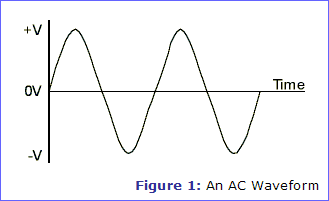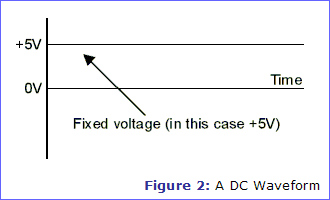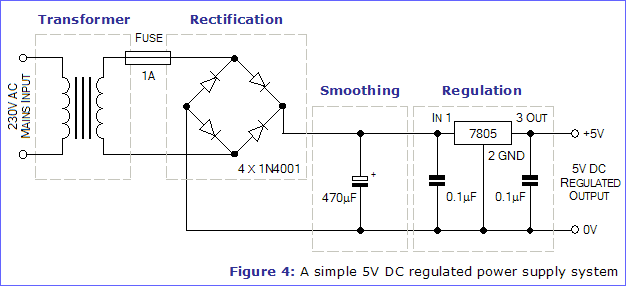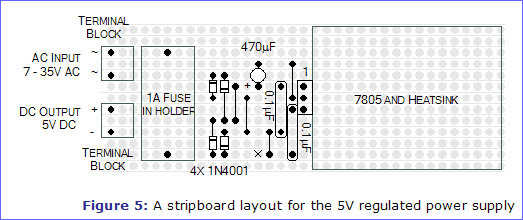
Building a Power Supply
By Tim Surtell
Most of the circuits in Electronics in Meccano need a smooth DC power supply in order to function correctly. Some other circuits, particularly those using digital ICs, also need their power supply to be regulated. In this article and the articles that follow in this series you will learn the meaning of terms such as 'smoothing' and 'regulation' and find out how to build a simple power supply for your circuits.
A representation of an Alternating Current (AC) supply is shown in figure 1. The voltage (and current) alternates between positive and negative over time and the resulting waveform shape is a sine wave. In the case of the UK mains supply, the frequency of this sine wave is 50Hz, or 50 cycles per second.

A Direct Current (DC) supply, shown in figure 2, stays at a fixed, regular, voltage all of the time, like the voltage from a battery. A DC supply is needed by most circuits as a constant reference voltage. Also, some components would be damaged by the negative half-cycles of an AC supply.

Figure 3 shows a block diagram of a power supply system which converts a 230V AC mains supply (230V is the UK mains voltage) into a regulated 5V DC supply.

A simple power supply circuit that includes each of these blocks in given in figure 4. The following articles in this series look at each block of the power supply in detail, but if you just want to build a 5V regulated power supply without understanding how it works, you can follow the instructions later in this article.
| Related Articles | The Transformer - Part 2 of this series | |||||
| The Rectifier - Part 3 of this series | ||||||
| Smoothing - Part 4 of this series | ||||||
| The Regulator - Part 5 of this series |

Figure 5 gives a stripboard layout for the 5V regulated power supply shown in figure 4. The layout does not include the transformer block, so the input to the board needs to be 7 - 35V AC from a suitable transformer. The layout includes space for two optional 2-way screw terminal blocks to make connecting up the power supply easier.
If the input voltage is 9V AC, you will be able to draw 1A from the power supply. For the maximum input voltage of 35V you will be able to draw 0.1A.

Article Information
Source: Electronics in Meccano - www.eleinmec.com
| First published in EiM: Issue 4 (June 1999)
Topic: Analogue Electronics |
Created: 09/09/2002 |
Last modified: 02/08/2007
Top of Page | Homepage | About | Search | Topics | Features | Circuits Shop | yourEiM |
© 1998 - 2025 Tim Surtell |